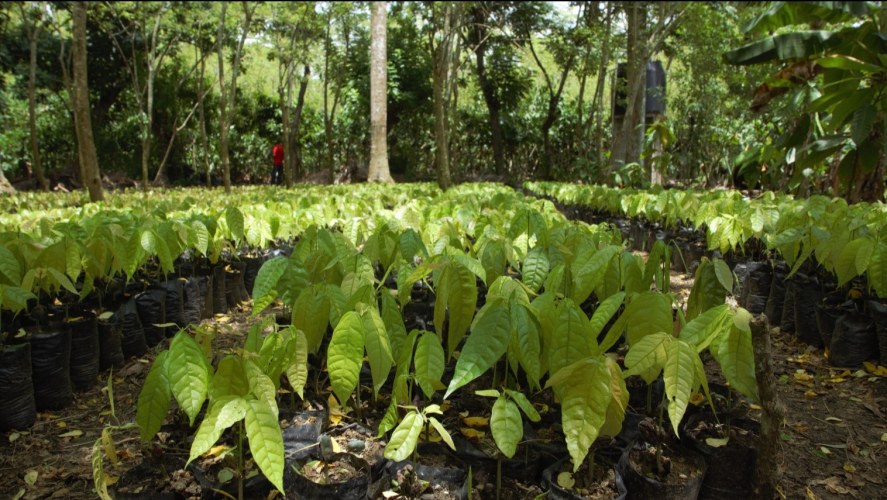By Giselle Alemán, Dominican Republic, Sept. 2017. On the Dominican part of the island of Hispaniola, four shade-grown cacao varieties prevail in agroforestry systems: National, Trinitarian (from Trinidad and Tobago and Brazil), Criollo from Venezuela and a small amount of Forastero cacao from Brazil. These varieties were very carefully introduced to the island, which keeps a detailed record of the origins of its cacao.
Cacao has been a traditional crop in the Dominican Republic, cultivated since the 1940s and exported in volumes of over 25,000 metric tons. Today, in times of good harvests the island receives more than USD 250 million from its export; furthermore, the country is literally oxygenating itself through the cultivation of cacao, which accounts for 9.5% of the total forest cover.
The farming model is based on the organization of the Dominican cacao value chain actors, which drew the attention of farmers in Honduras, Nicaragua, El Salvador and Guatemala who undertook a trip to this Caribbean country in order to learn from its experiences.
“The reason I came here are their production volumes, and to see these cooperatives with such high capacities” declared Santos Chirinos, a specialist of the Honduran Consortium composed of the European Union, Helvetas and VECOMA. Chirinos added that he was impressed by the farseeing actions taken by the Dominican Republic as to the plant replacement and plant diseases, such as the frosty pod rot and witch’s broom.
“I was impressed by the fact that they are already changing from hybrid cacao to grafted cacao. We in Honduras have the same problem with adult plantations of many years of age, and here they are already tackling this; in my country, we are working in the same way, which implies that in the region we are all interested in improving this point”, Chirinos explained.
Another aspect that drew the attention of the Central American participants was the organizational strength in the Dominican Republic. An example is the National Cacao Commission (CONACAO), created in 1976, which drafts cacao policies and cooperates with the Cacao Department in the Ministry of Agriculture. To guarantee the sector´s sustainability, cacao exporters have made contributions of USD 0.01 per exported kilogram for over 40 years; this money is used to finance CONACAO’s operations and cooperation with the Ministry of Agriculture.
With the help of the funds raised, farmers and exporters are able to self-finance the following:
• Planting material, trainings for farmers and extension workers
• Improvement of rural roads relevant for farming purposes
• Restoration of clone gardens and plant nurseries
• Financial engineering for the repayment of cacao farmers’ debts
• Support to research of national and international institutions
• Training of technical staff
• Participation in fairs and events for international positioning and marketing










